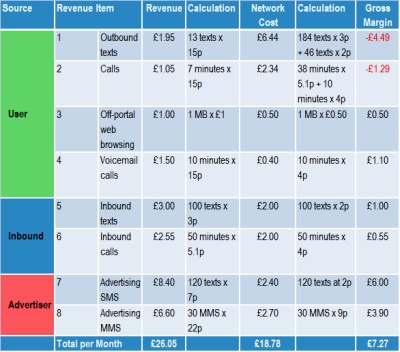How to make money by giving away cellular service
November 11, 2008/
celebrating their 200,000th subscriber. It took them just a year to reach this number, which is quite impressive to say the least. One might be wondering, though, how exactly they turn a profit if they’re not charging for basic services. They can’t be totally ad supported, can they? The short answer is no. The long answer is explained by Telco 2.0. After the jump we’ll go over the highlights, but if you’re really interested in this business model I’d suggest reading the whole thing.

his is effectively shown in the lower diagram of the chart above where we show operators as both receivers of money from end users (when originating the call) and receivers of money from other operators (when terminating the call). So every time a Blyk user receives a call or text from an off-net customer the originating operator pays Blyk for termination. In turn, Blyk obviously pays some of this termination charge out to its network supplier (Orange) but we guesstimate that the company still makes some margin on this.They also make money off of customer overages, which is probably significant, since they only give away a limited number of minutes and texts per month. All of this leads to Blyk having a rather high ARPU for a prepaid carrier, especially considering their base service is free. That could come down a bit: Blyk is experiencing a 29 percent response rate, which is far, far above the industry norm. If that comes down, advertisers might not pay as much, thereby decreasing Blyk’s revenue. Once again, it’s a rather interesting read if you have a half hour or so to kill.]]>
Posted in MVNO
